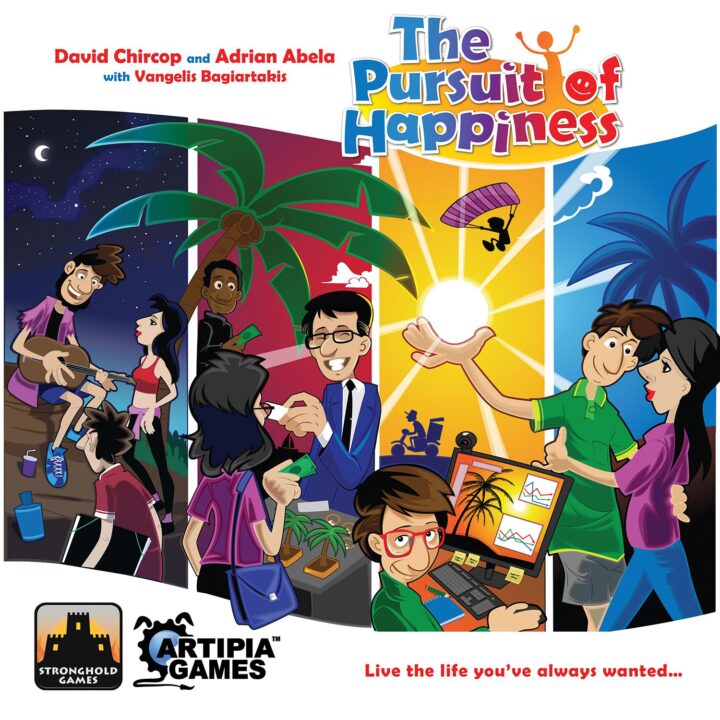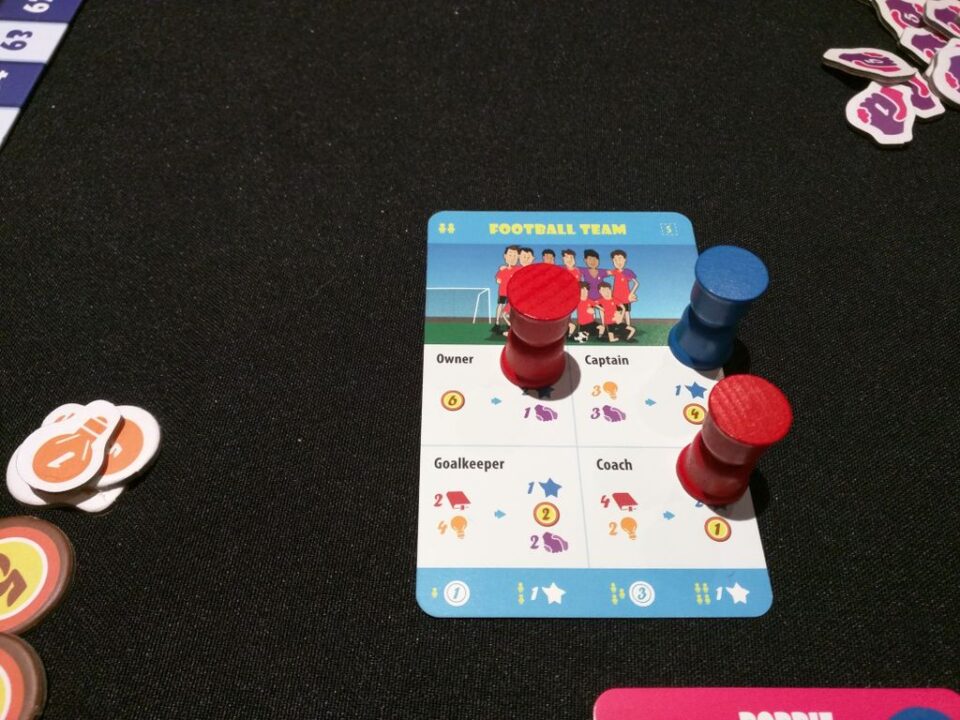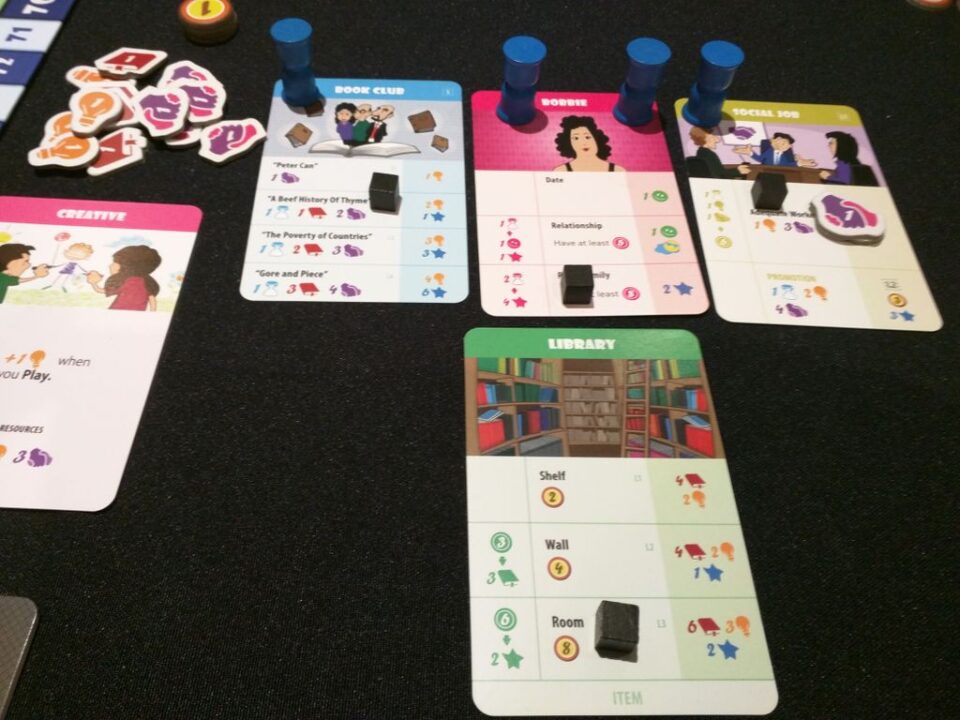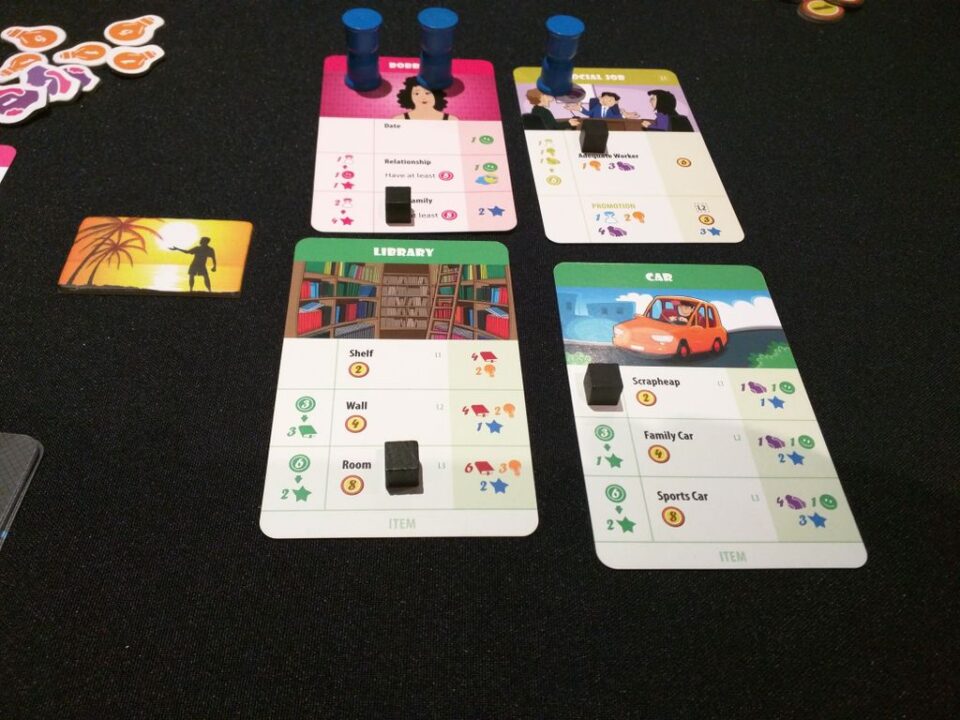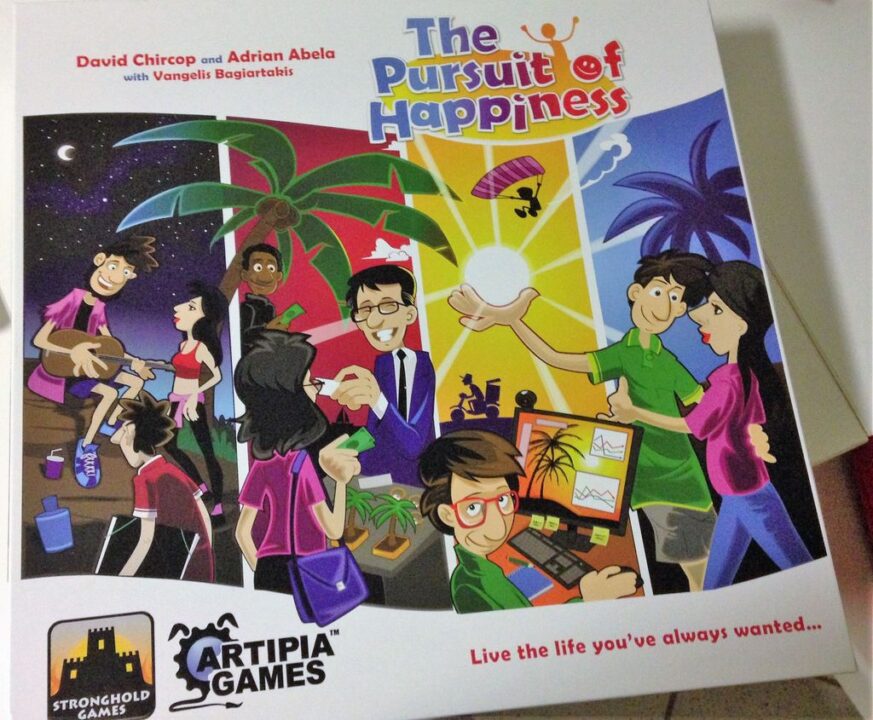Alright, folks, time for another review! If you’ve ever wanted to live several lifetimes in one evening (without the need for time travel or a fountain of youth), you’re in for a treat. I gathered my friends, shuffled up our ambitions, and set out to see who could have the most action-packed, drama-filled, cardboard existence. Here’s my take after a few rounds, a lot of laughs, and—let’s be honest—way too many existential crises at the kitchen table.
How It Plays
Setting up
Lay out the main board and shuffle all the decks. Give every player a player board, some wooden hourglasses, and basic resources. Put the tokens and cards in piles that you can actually reach. Decide who goes first by finding whoever last pretended to do yoga.
Gameplay
Every round, players use their hourglasses to do stuff like getting jobs, starting projects, dating, or buying weird gadgets you definitely don’t need. Between turns, you groan about someone else living a better life (in the game, don’t worry). You age up each round and face new life challenges, like midlife crises or realizing your dream career is ‘amateur board game reviewer.’ Manage your stress or you’ll burn out, just like in real life, but with fewer snacks.
Winning the game
When everyone reaches the end of their life track, you count up your happiness points. Whoever lived the happiest cardboard life wins. If you tie, both of you need to play again until someone cracks.
Want to know more? Read our extensive strategy guide for The Pursuit of Happiness.
Themes and Life Simulation: The Pursuit of Happiness on Your Table
If you’ve ever wanted to play out an entire life without actually getting any older (or getting those weird aches after sitting too long), The Pursuit of Happiness has you covered. I spent a rainy Saturday with my friends, each of us aiming for a different dream life: one of us became a workaholic with no friends, another started a rock band, and I—well, I collected board games. Art imitating life? Maybe a bit too close for comfort.
The game does an awesome job at capturing all those big life moments. You start young, awkward and broke. Then you pick up projects, hobbies, jobs, and partners—sometimes all at once if you want chaos. You keep an eye on your stress level though, or you’ll burn out faster than my attempts at keeping houseplants alive. There’s a really fun satisfaction in seeing your character’s life story come together, even when the dice say you’re out of time to learn basket weaving (yes, that happened to me).
What I really love is how the game lets you chase any dream. Want to focus on love? Do it. Want to buy weird stuff and ignore romance? Sure! Each choice changes the feel of your story, and you always feel like you’re in control. It’s sort of like The Game of Life, but with way more midlife crises and fewer plastic cars.
Next up: we’ll talk about Replayability and game length—I promise, no two lives will ever look the same!
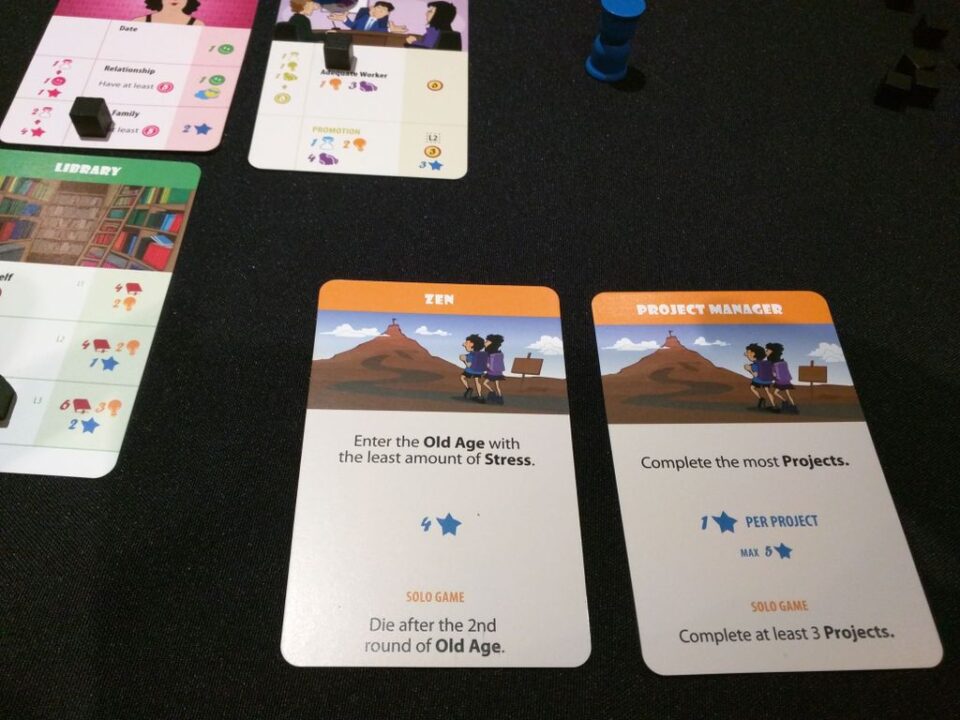
Replayability and Game Length: How Many Lives Can You Live?
The magic of The Pursuit of Happiness is that you can play it over and over without feeling stuck in a rut. Or, as my friend Paul put it, “This game is like Groundhog Day, except I actually enjoy it.” Every session is different because the projects, jobs, partners, and even the hobbies change. One moment you’re a globe-trotting scientist, next time you’re a professional dog groomer with a house full of cats. There’s always some new way to mess up your life, which, in my opinion, is a massive win for replayability.
The game takes around 90 to 120 minutes. My friends and I always end up chatting mid-game about how quickly the years seem to fly by, both in the game and in real life. If you’re like me and have the attention span of a goldfish, this length works out perfect. It feels like it has enough time for big plans and bad decisions, but doesn’t outstay its welcome. (Unlike last year’s Monopoly Christmas disaster—Uncle Pete is still banned.)
While there’s lots of variety, I’ll admit it’s not a game I’d play twice back-to-back in one day. But give me a week, and I’m keen for another crack at life. My only nitpick: with more players, it can slow down when someone turns their mid-life crisis into an Oscar acceptance speech. Overall, I reckon it’s a solid choice for regular rotation in your game nights.
Next up, I’ll spill the beans: is your fate in your hands, or is it just pure dumb luck? Stay tuned for my take on decision-making versus the dreaded dice.
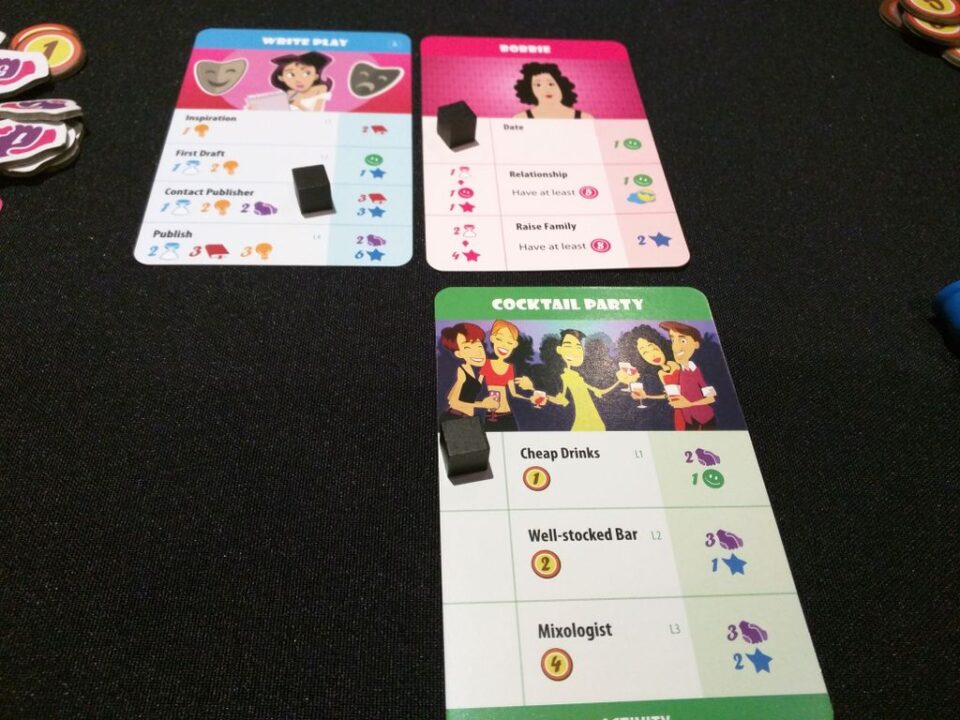
Who’s Really in Charge: Your Choices vs. Lady Luck in The Pursuit of Happiness
Let’s get real. If you ever wanted to run a music festival while juggling a pet snake and a stressful marriage, The Pursuit of Happiness is your jam. But is all this wild storytelling in your control, or is the game secretly run by the dice gods? After several heated sessions (with me yelling dramatically at cardboard and my friends rolling their eyes), I can tell you: decisions matter a whole lot here.
Every round, you pick which projects, jobs, or hobbies to chase. You choose if you want to work overtime, adopt a guinea pig, or risk your relationship by buying a jet ski. Each move uses your time and resources, so it actually feels like you’re crafting a life. Sometimes, you need to gamble a bit—like picking a tough project that might pay off big in the end. But most of the time, careful planning and clever choices get you further than blind luck.
Now, there’s some luck. Card draws can throw curveballs. Maybe the high-paying job you wanted pops up right when you need it. Maybe your dream-pet is snatched by your friend (who clearly doesn’t deserve that lizard). But unlike some games where you might as well roll dice and go make a sandwich, here you can almost always choose how to respond. If you get stuck with a tough event, there’s often a way to work around it. You never feel totally powerless. My group agreed: skill beats luck most of the time, which is a big plus in my book.
Before we all quit our jobs for hobby farming, let’s see if the bits and boards look as good as our imaginary lives—I’m about to dish on component quality and art!
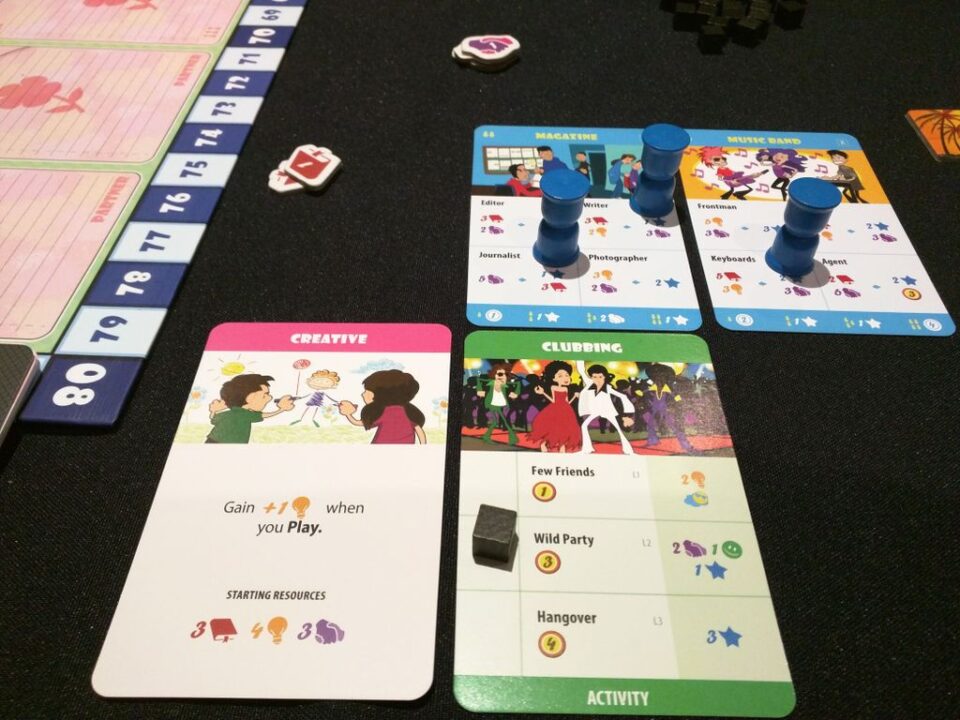
Component Quality and Game Aesthetics in The Pursuit of Happiness
Let’s chat about what you actually touch and see when you’re living your best pretend life in The Pursuit of Happiness. You know that buzz you get unboxing a new board game? That moment when you open the lid and hope you’re not just staring at fifty shades of grey cardboard? Well, my friends, this game mostly delivers the goods… with a couple hiccups.
First, the board art. It looks cheerful and modern, like the IKEA of board game design. The colors pop but don’t punch you in the eyeballs, which is nice after a long work day. The layout feels pretty clean, too, though my buddy Frank did once almost put his coffee down on the “Short-Term Happiness” track. (Spoiler: coffee stains do not improve happiness, long or short term.)
The cards are thick, like a good slice of toast. After a dozen plays, mine only have a couple worn edges, probably because my pals shuffle cards like angry raccoons. The iconography is super clear, so you won’t be squinting to figure out if you’re buying a pet iguana or starting a new career as a rock star.
Component-wise, the player tokens are generic, which is a bit of a letdown. I mean, you’re living different lives—give me something wacky! Maybe a tiny sushi roll, or a mini saxophone. But no, just standard chunky bits. At least they’re sturdy and not the sort of pieces the cat can eat easily.
Overall, The Pursuit of Happiness feels good on the table and won’t shame your shelfie. I’d recommend it if you want a fun, charming look with only minor gripes. Just keep coffee far, far away.

Conclusion
The Pursuit of Happiness pulled me in with its goofy theme and let me live life as wildly as I wanted—at least on cardboard. Replayability is solid, and most games run about two hours, which is just enough time for my friends to fake their dream jobs and complain about imaginary mortgages. Player choice matters more than luck (thank you!), and the art actually makes me feel like I’m in some kind of Saturday morning cartoon. Some tokens are a bit plain, but nothing broke even after Tim tried to eat a card. If you like life sims, give this a try. That’s it for my review. Now, I’m off to retire as a fictional trapeze artist with questionable life choices!

